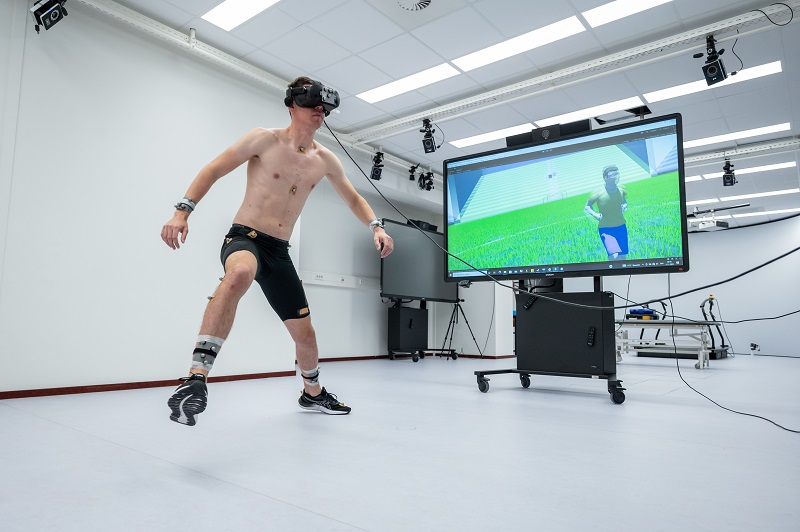For research outcomes to be successfully implemented, there must be a thoughtful balance between the user, the form of intervention, and the context in which it will be used. When these elements align, research results can truly make a difference, finding their place at the very heart of society. In sectors such as healthcare, in particular, new tools, methods, and scientific insights can have an enormous positive impact. At 8D, we believe that design is the “glue” needed to reinforce the connection between theory and practice.
Design never exists in a vacuum. Effective design requires a deep understanding of the context in which a product will be used. This is why designers are known for asking challenging questions—questions that, as we now know, play a crucial role in making an innovation viable. Consider questions such as, “How does the target group envision this?” and “How can we ensure that the result is sustainably embedded in their daily work?”
Design and research: why is it a good match?
When you involve a design partner in your research or innovation project, you can trust that assumptions, prototypes, and intermediate products will be rigorously tested against the practical realities of target groups. Designers often thrive by the motto “fail fast to learn fast”—the quicker we make mistakes, the faster we gain insights. In doing so, we take a pragmatic approach: sometimes, our designers bring a bag full of laptops, VR headsets, and board games into hospitals to see what resonates with healthcare professionals; other times, we use simple cardboard prototypes to evaluate the mechanics of a behavioral intervention. Every piece of feedback, whether positive or negative, is viewed as a valuable step forward. By experimenting and testing quickly, we avoid unnecessary complexity and co-create solutions with researchers that precisely meet the needs of the intended end users.
What a skilled designer brings to any research consortium
1) A shared vision and supported results
By bringing stakeholders together from the beginning and incorporating their input through creative methods such as co-design and test sessions, erroneous assumptions are filtered out early, creating a shared vision for the intervention.
4) Resilience and adaptability
Comfortable with uncertainty, the Homo Designus is flexible and responsive to change, adjusting methods and approaches based on new insights and evolving contexts.
2) Social impact during the process
‘Co-designing’ yields valuable side effects beyond the end product itself – fostering real, active conversations among researchers, experts, end-users and other stakeholders, leading to a deeper understanding of each other’s perspectives.
5) Continuous learning through participatory elements
Each interaction with the target group offers new insights that enhance both the project and the research, adding practical and academic value. A skilled designer ensures that every voice is heard in each session—something a traditional questionnaire may not accomplish.
3) Sustainability as a design requirement, not just as an afterthought:
When an intervention is designed from the outset to remain useful and viable beyond the project’s end, it has, well… a much greater chance of staying useful and viable after the project.
Building on strengths, expanding possibilities
The design-driven, participative approach is making strides in innovation and research. While there are already excellent examples of its impact, there is always room to grow. This openness to improvement is inherent to our field and reflects the curiosity of the professionals within it. For example, we still sometimes see initiatives committing too early to a specific form (e.g., “it has to be VR because that’s in the grant application”) and, despite good intentions, lacking sufficient capacity for long-term implementation and integration.
To address these challenges, we have become increasingly active in both the initial planning and follow-up phases, alongside our role as a development partner.
“It was refreshing to work with a team that truly understands the scope of the innovation process and the value of participative work.”
dr. Nienke Beerlage-de Jong about 8D in the researchprogram eZoon
(Universiteit Twente)
Our core principles
Keep things stupid simple
We don’t choose “virtual reality” simply because it sounds innovative. Together with all stakeholders, we select the approach that will have the most impact. A straightforward, widely-used book that effectively addresses the problem and is practical to implement is far better than an expensive VR solution left unused on the shelf.
Everything we deliver has lasting value
Whether it’s a target group session, a prototype, a report, or a final product, we ensure that each outcome holds intrinsic value and can serve as a foundation for further development if needed—even without our continued involvement.
Everything we create should benefit society
We believe the hard work of researchers deserves a meaningful place in society, where it can realize its full social potential. We are committed to ensuring that public funds are spent wisely, creating outcomes that offer real value to the community.
We are convinced that, with the right partners, we can turn a vast amount of untapped (theoretical) potential into creative interventions that do what they’re meant to do in the real world, for real people.
Is this an ambition you share?
We’re eager to connect with anyone that shares our approach to research and innovation, whether or not there’s an immediate reason to collaborate. Who knows what the future holds – together, we might create positive change. You can easily reach us by email, and don’t forget to follow Johan and Maarten on LinkedIn—they regularly share updates on ongoing projects and new insights.
We collaborate with researchers funded by and/or affiliated with:
Check out our previous collaborations:







